#i have no emoji fluency. what does this even mean? who knows figure it out
Note
🐝- describe your aesthetic in emojis :)
Ooh I dunno I feel like I don't know half of the emojis there are give me a sec
Holy shit there are some specific ass emojis I don't even know where to start. I'm also not sure what my aesthetic is? Describing my personality might be a lil easier but I'm not even sure I have an aesthetic. I have been told multiple times that people think I'm goth which is blatantly not true I just forget to buy coloured clothing and had a vampire phase so I guess we'll work with that
🧛♀️🌥️🫥🍞📚❔
Thanks for the ask honey I kinda wanna see how other people would answer this cus I have no clue 😅
#ace answers#nonnie#sweet and pure asks#i have no emoji fluency. what does this even mean? who knows figure it out#there are so many very detailed emojis i never knew existed
1 note
·
View note
Text
PROFILE - Part Two: Language Profiling
Using language to deduce from a person is an underrated part in the profiling of a person, and therefore isn’t often covered, at least not taken as seriously as it should be. However, like appearance, people choose what to say and how to say it. Any choice made by a person tells you something about them, if you know what to look for, and how to look for it. Observe what you hear from a person and reason from the data. Here are some things to look for.
IMPORTANT: This is a general guide to what you can find with some of the specific areas covered, and should be treated as such; there will never be a definite answer to everything to emerge from here, as every situation is different, as well as the people involved, so context must always be taken to consideration.
Verbal Communication
Accent:
Familiarize yourself with the variety of accents in your country and your language, as well as how letters are pronounced in different languages. This can tell you if they’re native or foreign, and if foreign, where they might be from. (Common slang specific to a certain region of a country is also an indicator, but that’s up next). Accents can be learned, but getting to a native like fluency with it does take time. A good way to really learn and memorize the differences between similar accents is to practice them yourself. Make an effort to familiarize yourself with the slang of various regions of your country and other countries that speak the same languages that you do.
British Accents: x
American Accents: x
Vernacular:
The way that people phrase things, the slang, and the colloquials they use can clue you into how educated they are, as well as where they’re from. How they speak also holds strong indicators to certain personality types (ie serious, playful, shy, etc. That’s psychology, and will be covered in the final post of this introduction series) It is important to note that these are guidelines, and must be added into the context of the situation you’re in.
Furthermore, what someone says is obviously pretty important. Take note of what someone says as well as how they phrase it; people tell you more than they realize. For example, do they reference goals or ambitions? How do they say them? Whimsical? Determined? Hopeful? Maybe even sad? All of this gives you clues to things such as personality, interests, hobbies, and current living situation, to name a few. For example, is a casual acquaintance open and honest about more personal topics? Are they like that with everyone, or just you? If it’s with everyone, that points to a trusting, open, sociable person. If you observe that it’s just you they share with, it’s probable that they trust you, and feel safe sharing with you.
Context, and pay attention to not only what they’re saying, but also what it implies. This can be applicable to deduction as a whole, as well.
Tone:
Tone points to immediate mood and feelings, toward both the situation they’re in and the people involved, perhaps something else that’s on their mind. Watch for changes in tone and think about what that change indicates. Watch for shakiness in the voice, which implies an increasing level of some kind of emotion - be it sadness, anger, or fear. Most people are already sensitive to tone of voice, so this is a bit easier to pick up. Listen for variations in the person’s voice, large and small. Someone’s pitch will go up if they’re anxious or on edge (which can also be an indication of lying).
Texting:
This one can be a bit tricky because it requires setting up a baseline of some kind. People develop their own texting style. These patterns become clear - commonly used abbreviations, emojis, and even specific phrases. Deviation from these patterns can mean there’s something up - again, context is key here. For example, someone who usually says “Lol’, suddenly says “Haha”, you can assume their mood has deviated somehow, there’s something that caused the change in pattern. They may be angry, upset, or uncomfortable with the topic at hand. Context will tell you which.
Variations in spelling tells you where someone may be from. For example, America and the UK spell some words in a slightly different manner. Here are some examples with common differences:
UK - USA
Colour - Color
Centre - Center
Recognise - Recognize
Analyse - Analyze
Fuelled - Fueled
Licence - License
Defence - Defense
Additional Tips and Notes:
It’s also worthwhile to look into the basic sentence structure of different languages. I’ve found that it gives me a better clue as to what other languages a person may speak. Additionally, what mistakes will be common to someone who may not be entirely fluent. Absolute perfect grammar, or unnecessarily formal sentence structure (i.e. lack of contractions, “I am” vs “I’m” or “Cannot” vs “Can’t”, or lack of common grammar mistakes of native speakers, example “I am well” instead of “I’m good”) can sometimes point to a second language. It is important to remember that most of these are potential indicators. Meaning, alone, you can’t make a strong deduction with them. But when they start to pile up, then you can be a bit more certain in the accuracy of your deduction. Like clues, only one can’t really prove much. It may point in a general direction, but it needs more supporting evidence to create a probable explanation.
Nonverbal Communication
Quick Note on Body Language
Body language is an important part of nonverbal communication. However, as this is an introductory post, and there is way too much information to explain, it won’t be covered in this post.
Microexpressions:
Microexpressions are an interesting and worthwhile study. Microexpressions, put simply, are small, millisecond long facial tells that point to certain emotions. One can’t learn to control them, hence why they can be so useful. Learn not only how to read them, but interpret them, figure out why they’re having that particular emotion. There are seven universal micro expressions that all humans share, regardless of where they live and the culture they grew up in. (This research was pioneered by Dr. Paul Ekman. A popular TV series was made surrounding the topic of nonverbal body language and Dr. Ekman’s research called “Lie to Me”, which is quite interesting and a fun way to gain exposure to the topic.) The seven, along with their key traits are:
Surprise
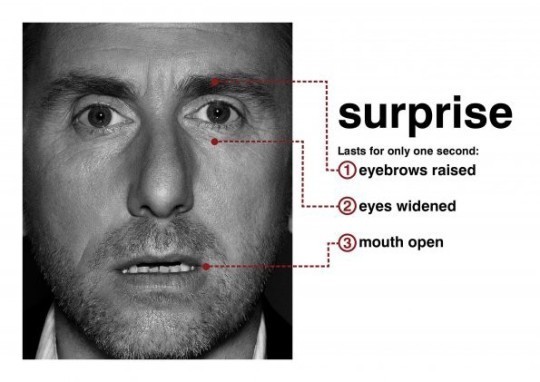
Fear
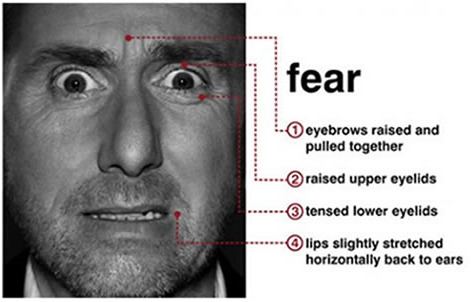
Sadness

Anger
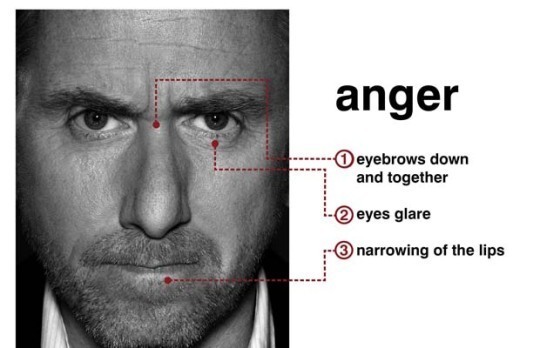
Happiness
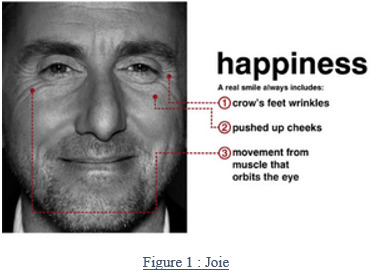
Contempt
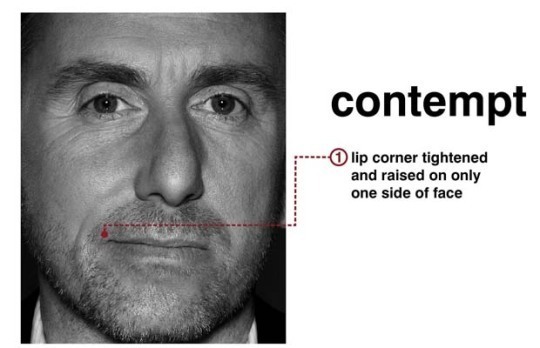
Disgust
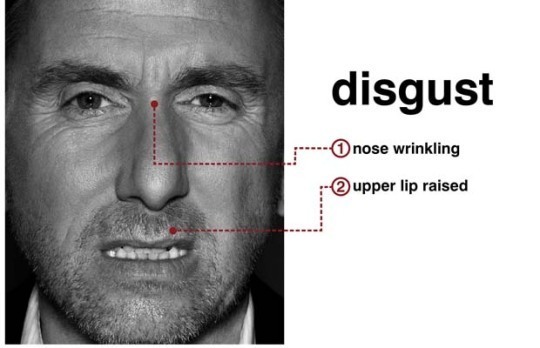
All of these combined creates a fairly decent language profile of a person. One more time -
All of this is context driven, and you must always keep this in mind. These are clues and tips, and you must take context into account. Sweating doesn’t always mean someone is lying, and lying doesn’t always have to do with what they’re currently talking about. This will become easier to do with practice.
This, combined with a Physical Profile (the topic of last week’s post), begins to create a complete profile of someone you meet. The final section to complete your profile, the psychology of who you meet, will be posted next week.
46 notes
·
View notes
Text
The Myth of ‘Unchained Hillary’
New Post has been published on https://thebiafrastar.com/the-myth-of-unchained-hillary/
The Myth of ‘Unchained Hillary’
As most Democrats look ahead to 2020, Clinton and her fans keep using Twitter to relive and recast 2016. Online, at least, there are still plenty of people who refer to her as “Madam President,” and she tosses this club a steady stream of caustic little bonbons: subtleMean Girlsreferences, snarky clapbacks, dry comments like “Yes, I am famously underscrutinized.” Fans responded to that one with cheers and GIFs of Rihanna putting on a crown. A writer forEsquiresummed up the sentiment: “You’re having fun now, aren’t you?”
The tweets have helped conjure an image of the former candidate you might call Unchained Hillary, or, as some of her Twitter followers have dubbed it, Hillary with “zero f—s left to give.” The idea is that, unconstrained by public office, unfazed by critics and trolls, Clinton feels free to unleash a looser, truer, more spontaneous self. Her Twitter account is the most reliable vehicle for this version of Hillary, but she has shown flashes of the persona at public appearances, too: flipping through a book of her emails at a Venice Biennale art installation and filming a Halloween bit for about the scariness of the Electoral College for theDaily Show with Trevor Noah. In early December, she spent hours chatting with Howard Stern, talking trash about Donald Trump and Bernie Sanders, even addressing head-on the rumors that she’s a lesbian. (“Never even been tempted,” she said.)
Unchained Hillary is perceived not just as a set of tweets but almost a new character on the political stage, the candidate her fanswishhad run in 2016. She is casual, snappy, direct and less inclined to carefully triangulate every public statement. And her presence over the past few months, online and in a string of book-related media appearances, has sparked a whole new round of speculation: Could Unchained Hillary have beaten Trump? Could she swoop into the 2020 field? Is she laying the groundwork for yet another phase of a political career?
But Clinton’s fans might want to cool off their enthusiasm. If you take the full measure of Clinton’s career, her voice appears less as a reinvention than as a kind of solar eclipse: Without the candidate version of Clinton to dominate our view, delivering cautious speeches and walking rope lines, her online persona shines through far more clearly. And that persona isn’t a new thing. It’s a side of Hillary Clinton sharpened by what you might call the default voice of Twitter: Sardonic, mildly bitter, unafraid to say what everyone else is thinking. It’s the same voice her digital staff worked hard to craft in 2016. Hillary, and whoever still might tweet for her, has been good at that for a while. So what is she using her voice for now?
***
Donald Trump may get all the attentionfor being the first candidate who used Twitter to disrupt politics, but if he’d never come along, with his unspellchecked fire hose of insult and puffery, Clinton stood a good chance of being that person. Even before young upstarts like Reps. Alexandria Ocasio-Cortez and Ilhan Omar made emojis and quote-tweet clapbacks the norm on political Twitter—in fact, well before the 2016 race—Clinton’s digital staff was pioneering a new political tone on social media.
Early on, the Clinton team understood how to seize the made-for-internet moments that fell in their laps, as shown by one well-known episode in 2012 when Clinton was secretary of State and Reuters published a candid photo of her wearing sunglasses and staring at her BlackBerry. Two young Washington public relations hands launched a Tumblr blog featuring imagined text exchanges between this boss-lady version of Clinton and various public figures. One sample exchange from the blog went like this: Barack Obama: “Hey Hil, Whatchu doing?” Clinton: “Running the world.” Clinton’s staff had the instinct to capitalize on the moment: They quickly reached out to the bloggers, contributing an entry and inviting them to meet her. It was proof not just that she could get a joke, but that she could toss it back in fluent internet-speak. (There is a cautionary tale embedded here, too: It was literally that photo of Clinton on her Blackberry that prompted the initial questions about her use of a private email server.)
Imagewise, the moment felt like a stake in the ground, a sign of new-media savvy at a time when many veteran politicians found the internet a mystifying entity. And in the 2016 race, Clinton doubled down. To run her digital operations, she hired Teddy Goff, who had been President Barack Obama’s digital director in 2012, and led a staff of Brooklyn-based “content producers” who aimed for a savvy, conversational voice. “We’re not competing with Donald Trump on Facebook,” Goff told theNew York Timesat the time. “We’re competing with your best friend, your spouse, your mom, last night’s Olympics clips.”
Ultimately, though, Clintonwascompeting against Trump. And when you look back at the candidates’ bodies of social media work, you can see how hard Clinton’s campaign worked to match the energy of Trump’s insane, magnetic feed—and how successful it was in crafting something to meet the moment.
Trump wielded the medium much as he does now, with a reflexive mix of anger, pride, insults and oddball jokes. His tweets were an extension of his mood, his brain and his ego, and they felt like a manifestation of his true self. When his staff tweeted for him, it was often obvious: No one else could have crafted that voice. Clinton’s feed—which, like many other politicians’, was largely ghostwritten—was more tightly attuned to the social trends of the moment. Her staff balanced sly references to the Trump campaign with the salty terseness of Twitter clapbacks. “Delete your account,” read her most-retweeted entry. It came in response to a snide comment from Trump about Obama’s endorsement of Clinton. “(It’s only Wednesday.),” she tweeted in May 2016, above an image of a statement from her campaign chairman describing a rash of questionable behavior by Trump that week. “Vote your conscience,” read another, a reference to a speech Ted Cruz had made an hour and a half earlier at the Republican National Convention. (That tweet was paired with a link to a voter registration page.) Her feed was also savvy about pop culture; when Trump used an image of “Frozen” merchandise to defend himself against charges of anti-Semitism, Clinton shot back with a “Frozen” reference that eviscerated his argument.
Woven in with these grabs for clicks and cash were videos of the candidate at African American churches and talking with little girls—the kind of anodyne fare that, in a previous campaign, might have been the entire social media program. Clinton’s team didn’t have the luxury to fall back on feel-good messaging, so it made the most of the sometimes odd combination of her wonkish, earnest persona and Twitter’s hard-edged cynicism. The feed could be informal, curt, and bold. It aimed at looking effortless, even when tweets were layered with carefully considered meaning. In the case of the “Wednesday” tweet, for instance, Clinton was essentially dunking the ball after an alley-oop pass, adding humor on top of a substantive point—a tested social media trick to make the original point spread farther and wider than it would have on its own. “If there is one thing that the internet likes, it’s being really direct. If there’s been a change in how Hillary engages online, then that’s probably it,” Goff told Elle magazine in the summer of 2016.
The effort didn’t always hit the mark. Both supporters and critics on the left complained about the glibness of a tweet that asked, “How does your student loan debt make you feel? Tell us in 3 emojis or less.” Overall, though, Clinton’s social media operation was noted for its fluency in internet. “Hillary Clinton’s Twitter game is #Strong,” read one Elle social headline. A piece in Mashable explained “How the Clinton campaign is slaying social media.” By the July before the election, she had about 7 million Twitter followers, compared to Trump’s 10 million. (They’re now at 26 million and 68 million, respectively.)
The trademark success of her digital team was taking a candidate frequently knocked for her lack of charisma and building a charismatic online presence around the parts of her personality that matched. And in some ways, Twitter’s snarky milieu made that easy. In real life, Clinton “has a very biting, sharp sense of humor, or a very sharp, humorous way of making serious points,” says Philippe Reines, Clinton’s longtime aide, spokesman and debate-prep sparring partner. “Twitter allows us to say things that ordinarily would stay in your head, or in the room you’re in, and share it with the world.”
***
Today, Clinton’s staff is largely gone,and it’s safe to assume her Twitter voice is more reliably her own. “She has a very small office, and it’s mostly scheduling, correspondence—so there’s no ‘they,’” Reines tells me. Sometimes a staff member will have an idea for a tweet, he says, “but she’s not one of these absentee landlords on her Twitter account at all. And certainly nothing goes out without her, you know, putting her imprimatur on it.” Goff declined to comment for this story; another longtime Clinton spokesperson ghosted.
Clearly, there’s something real about the Clinton we see now, but the campaign DNA remains.
There’s the same dry sarcasm, as when she tweeted a clip of Trump talking about Ukraine to news reporters and commented, “Someone should inform the president that impeachable offenses committed on national television still count.” There’s a very non-boomery engagement with current pop culture. Over the summer, she had a brief exchange with pop singer Lizzo; last spring, she tweeted at Trump with a famousMean GirlsGIF in which Regina George asks, “Why are you so obsessed with me?” She wields hashtags like #tbt, which she artfully used to reference her time spent, as a young lawyer, on the Watergate impeachment inquiry. And she tweeted a fake letter from John F. Kennedy to Nikita Khrushchev, lifted from Jimmy Kimmel writers, that was obviously primed to spread like wildfire—much like the made-to-go-viral tools her campaign created, like a “Trump Yourself” filter that let users overlay Trump quotes on social media photos.
On the other hand, Clinton issues even more tweets that feel like official communications from an ongoing campaign. There are plenty of cheery, milquetoast tweets promotingGutsy Women, the book she co-wrote with her daughter. Policy endorsements get threaded in, sometimes less artfully; after the World Series, she turned a congratulatory tweet for the Washington Nationals into an endorsement for Washington, D.C., statehood. Still pinned to the top of her feed is a line from her 2016 concession speech about the value of little girls.
Reines agrees with the notion that there’s nothing new about Clinton’s public persona—and that, over her decades of public life, as she’s taken on a broad range of public roles, people have always tried to search for hidden meaning in the same old communications. “Look, I started to work for her in 2002. I’ve gone through this ‘something’s changed’ routine,” he tells me. “I really think it’s in the ear of the beholder.”
So if she’s still maintaining the persona, and the presence, her staff built to run for president in 2016, what’s it all for this time? Clinton has publicly pushed back on the idea that she’ll run again. But there are clues scattered throughout her 2017 postelection memoir,What Happened. The book was mostly infused with a sense of mourning for a presidential administration that wasn’t to be and a place in history as the first female president. At one point, she shared a passage from her planned election night victory speech, in which she imagined meeting her mother as an 8-year-old and telling her that her future daughter would grow up to be president. It seemed clear that she saw her loss, not just as a shock or a thwarting of ambition, but as something closer to personal tragedy. It was an emotional defeat she could manage in part by retreating from public life: walking in the woods, spending time with her grandchildren, going to the theater.
Now, though, she has recovered and rebounded is and back on the public stage, through some combination of circumstance and calculation. She wrote a book about successful upstart women, with a massive book tour scheduled for the run-up to an election year—and a built-in reason to maintain a Twitter presence. And the fact that her book appearances coincide with the Trump impeachment drama makes her loyal fans cling even more fiercely to their alternate vision of 2016, the fact that she won the popular vote, the lingering “I-told-you-so” factor. She’s still a political player, but the campaign is different this time: It’s a bid to solidify her place in history. And without the grueling work of actually going out on the stump, she still gets to act like a candidate. Occasionally.
Read More
0 notes